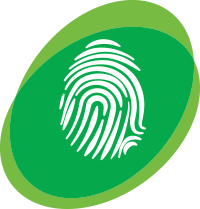In criminal cases, forensic science reports and expert testimony play an increasingly important role in adjudication. More states now follow a federal reliability standard, following Daubert v. Merrell Dow Pharmaceuticals and Rule 702, which call upon judges to assess the reliability and validity of such scientific evidence. Little is known about what education law schools provide regarding forensic and scientific evidence, or what types of specialized training they receive on scientific methods or evidence. Whether law schools have added forensic science courses to their curricula in recent years was not known. In order to better understand the answers to those questions, in late 2019 and Spring 2020, we conducted searches to identify course offerings in forensic sciences at U.S. law schools and then surveyed their instructors, asking for syllabi and information concerning how the courses are offered, how regularly, and with what coverage. We identified just forty-two courses at law schools, and received responses with more detailed information from twenty-two instructors. In this Article, we describe our findings, and situate them in the offerings of law schools regarding evidence, science, and quantitative methods. We suggest that at law schools, forensic science will necessarily be a specialty subject that can and should be further taught in continuing education programs, but also that quantitative methods courses in law school may help provide the foundation for such continuing education.
Forensic Science in Legal Education

Journal: Duke Law School Public Law & Legal Theory Series No. 2021-22
Published: 2021
Primary Author: brandon Garrett
Secondary Authors: Glinda Cooper, Quinn Beckham
Type: Publication
Research Area: Training and Education
Related Resources
Statistical Interpretation and Reporting of Fingerprint Evidence: FRStat Introduction and Overview
The FRStat is a tool designed to help quantify the strength of fingerprint evidence. Following lengthy development and validation with assistance from CSAFE and NIST, in 2017 the FRStat was…
Hierarchical Bayesian non-response models for error rates in forensic black-box studies
Forensic science plays a critical role in the United States criminal legal system. Historically, however, most feature-based fields of forensic science, including firearms examination and latent print analysis, have not…
The ASCLD Forensic Research Committee and You: A Collaboration Worth Investigating
This CSAFE webinar was held on November 17, 2022. Presenter: Henry Maynard Forensic Research Committee Chair, American Society of Crime Laboratory Directors Presentation Description: Over the last few years, the…
handwriter: a Demonstration and Update on CSAFE Handwriting Analysis
This CSAFE webinar was held on October 18, 2022. Presenters: Alicia Carriquiry Director, CSAFE Distinguished Professor and President’s Chair, Department of Statistics – Iowa State University Stephanie Reinders Research Scientist,…




